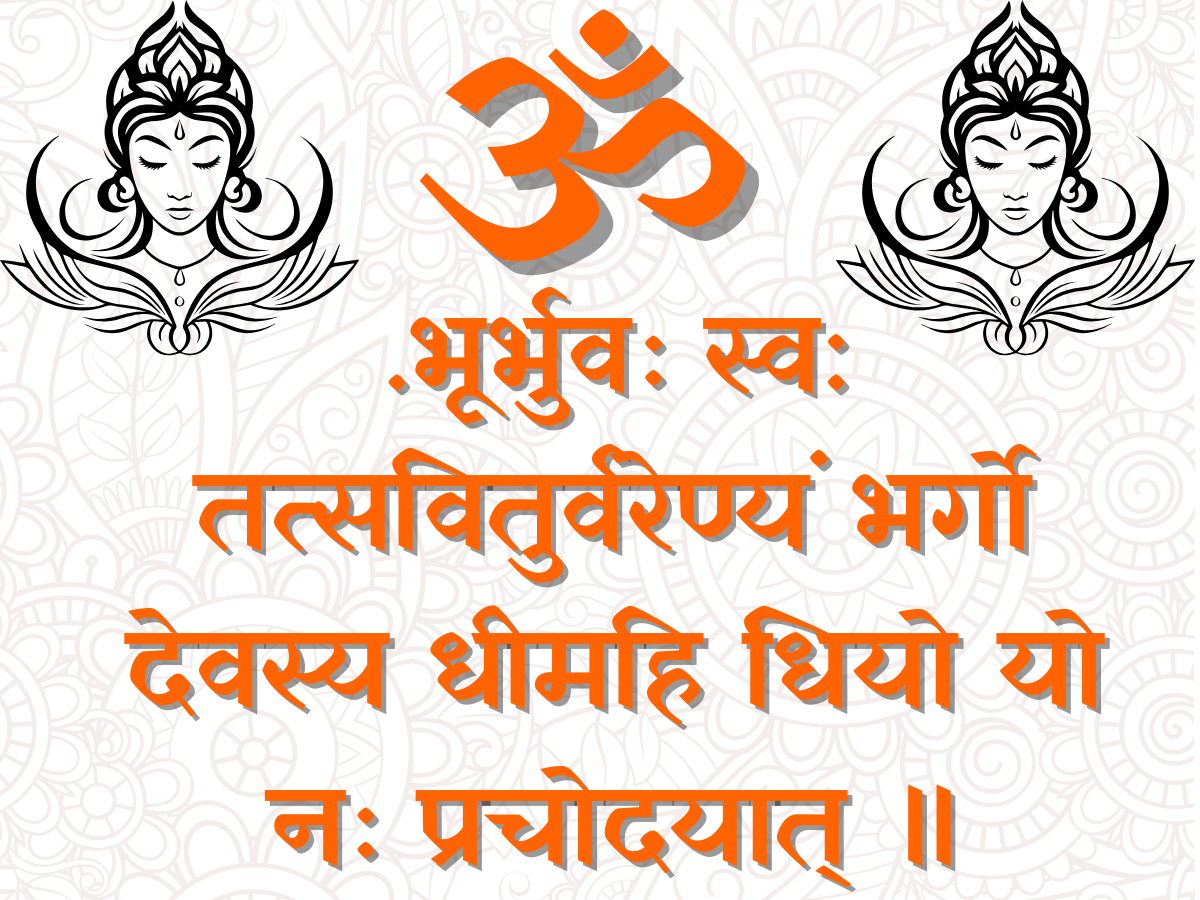Gayatri Mantra benefits and meaning
The Gayatri Mantra is one of the most powerful and ancient Vedic chants in Hinduism. Known for its spiritual significance and calming effect on the mind, this mantra is much more than just a religious
The Gayatri Mantra is one of the most powerful and ancient Vedic chants in Hinduism. Known for its spiritual significance and calming effect on the mind, this mantra is much more than just a religious

The Gayatri Mantra is one of the most powerful and ancient Vedic chants in Hinduism. Known for its spiritual significance and calming effect on the mind, this mantra is much more than just a religious hymn—it is a tool for mental clarity, inner peace, and spiritual awakening.
In this detailed article, we’ll explore the meaning of the Gayatri Mantra, its origin, and the scientifically and spiritually backed benefits of chanting it regularly.
The Gayatri Mantra is a sacred verse from the Rig Veda, written in Sanskrit more than 3,000 years ago. It is addressed to Savitar, the Sun God, and is considered a universal prayer that inspires wisdom, focus, and enlightenment.
Here is the mantra in its original form:
“ॐ भूर्भुवः स्वःतत्सवितुर्वरेण्यंभर्गो देवस्य धीमहिधियो यो नः प्रचोदयात्”
Transliteration:
“Om Bhur Bhuvah SwahaTat Savitur VarenyamBhargo Devasya DheemahiDhiyo Yo Nah Prachodayat”
The Gayatri Mantra can be broken down for better understanding:
Om – The universal sound; the essence of the universe.
Bhur – The earthly realm or physical world.
Bhuvah – The mental world (emotions, thoughts).
Swaha – The spiritual realm or celestial world.
Tat – That (referring to God or Supreme Reality).
Savitur – Of the Sun or Source of light.
Varenyam – Fit to be adored or worshipped.
Bhargo – Divine light or spiritual brilliance.
Devasya – Of the Divine.
Dheemahi – We meditate upon.
Dhiyo – Intellect or understanding.
Yo – Who.
Nah – Our.
Prachodayat – May inspire or guide.
Simple Translation:"We meditate on the divine light of the Creator, who has created the universe, who is worthy of worship, and who is the embodiment of knowledge and light. May He inspire and enlighten our intellect."
The power of the Gayatri Mantra lies in its vibration, its meaning, and its connection to the divine. Here are some of the most powerful benefits:
The rhythmic chanting of the mantra stimulates the brain's frontal lobe, enhancing focus, memory retention, and mental clarity. Students and professionals can greatly benefit from regular chanting.
Scientific studies have shown that the repetitive chanting of mantras can reduce cortisol (stress hormone) levels in the body. Gayatri Mantra helps calm the mind and promotes inner peace, making it ideal for people dealing with stress, anxiety, and emotional instability.
The Gayatri Mantra opens up the third eye chakra (Ajna), responsible for intuition and higher thinking. Regular recitation strengthens your spiritual connection and builds awareness beyond the physical senses.
Chanting the Gayatri Mantra has a soothing effect on the nervous system. It can help regulate heart rate, lower blood pressure, and improve overall heart health by reducing stress.
Vibrations generated by chanting the Gayatri Mantra create a protective energy shield around the body. It purifies the aura and wards off negativity, depression, and low energy.
Gayatri Mantra is known to activate all seven chakras (energy centers) in the body. This leads to improved health, emotional stability, and spiritual growth.
Since the mantra is in Sanskrit, chanting it correctly improves speech clarity, strengthens vocal cords, and enhances breathing patterns—a benefit for singers, speakers, and meditators.
The mantra salutes the sun, which is the source of all life. Chanting it at sunrise builds harmony with natural forces and instills gratitude, humility, and a sense of balance with the cosmos.
While you can chant the Gayatri Mantra at any time, the best times are:
Early Morning (Brahma Muhurta: 4 AM to 6 AM)
Sunrise or Sunset
Before any major decision or important task
How to chant:
Sit in a clean, quiet place (preferably facing east).
Close your eyes and take a few deep breaths.
Chant the mantra slowly and clearly (21 or 108 times is ideal).
Focus on the sound and meaning rather than rushing.
Using a rudraksha mala (rosary of 108 beads) can help with consistency.
Several modern scientific studies have supported the effects of chanting on the human body and brain:
Increases alpha brain waves, which are associated with deep relaxation.
Reduces anxiety and blood pressure.
Promotes neuroplasticity and positive brain changes over time.
The Gayatri Mantra, in particular, is known for producing a healing resonance due to its perfect Sanskrit phonetics.
Though traditionally chanted during sacred rituals, the Gayatri Mantra is a universal prayer. It is not bound by religion, caste, or gender. Anyone seeking clarity, strength, or peace of mind can chant it.
It is especially helpful for:
Students
Professionals under pressure
People going through emotional turmoil
Elderly seeking peace
Children for better concentration
“Only Brahmins can chant it” – Not true. Today, it is open to all spiritual seekers.
“It must be chanted only by men” – Incorrect. Women can and do chant the Gayatri Mantra.
“You need to know Sanskrit perfectly” – While correct pronunciation is ideal, intention and devotion matter more.
The Gayatri Mantra is more than just a hymn—it is a spiritual tool for unlocking higher consciousness, healing the body, and finding mental peace. Whether you are spiritual, religious, or simply looking for calmness in life, incorporating the Gayatri Mantra into your daily routine can transform your mind, emotions, and energy.
So take a few minutes daily, sit in stillness, and chant this sacred mantra. Over time, you'll begin to notice its incredible impact—not just on your thoughts, but on your entire life.
Writer and content creator
Log in to share your thoughts and engage with other readers.